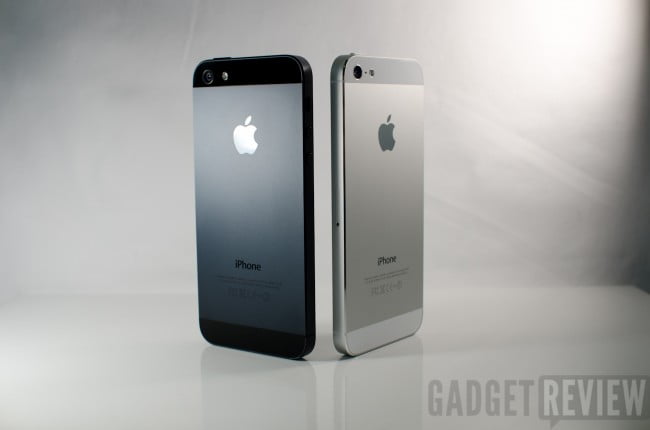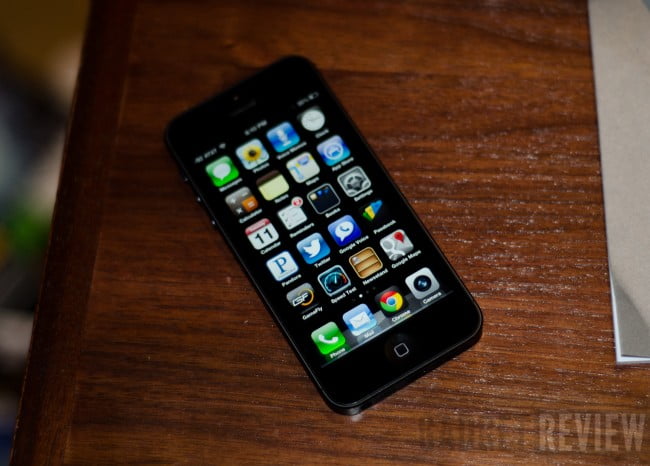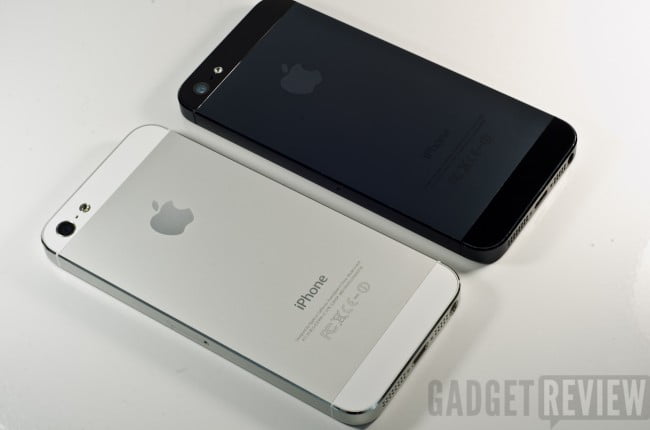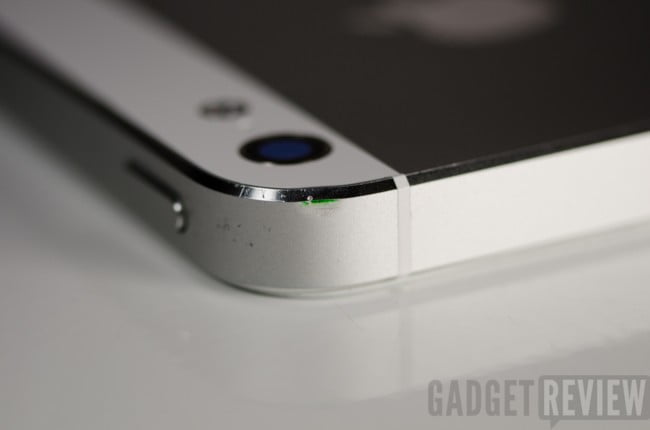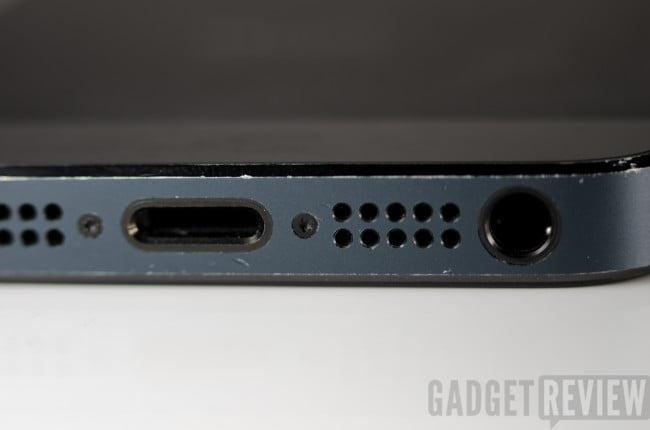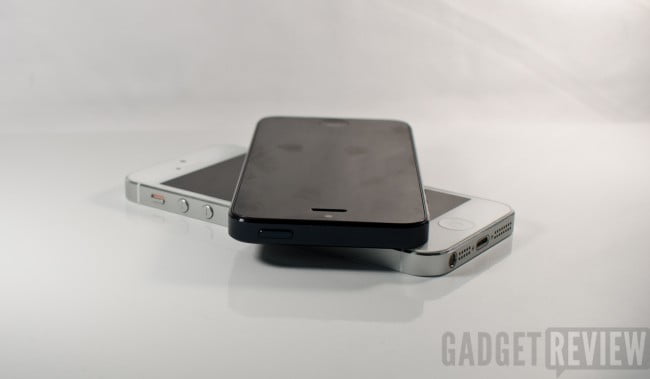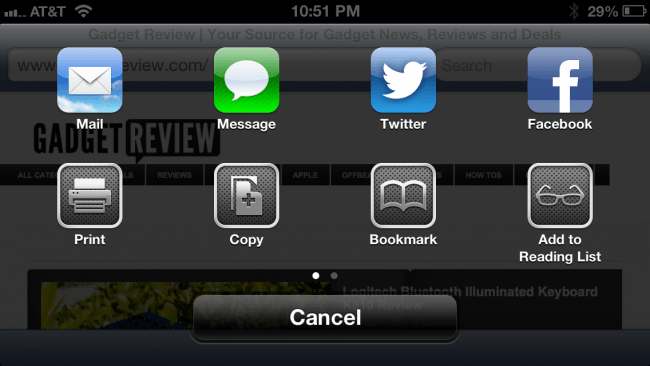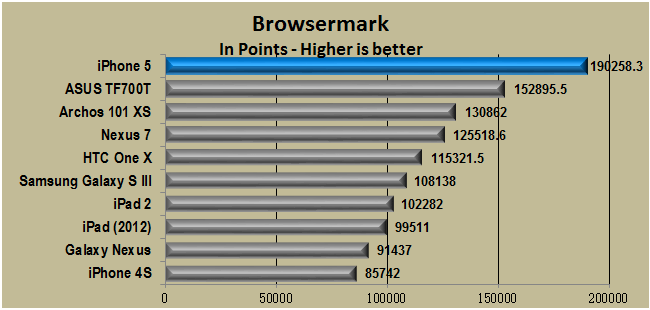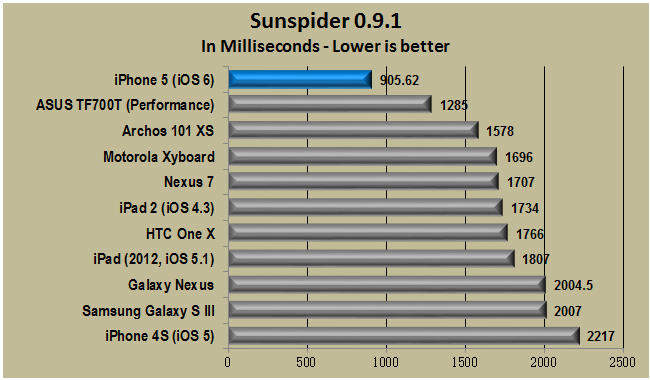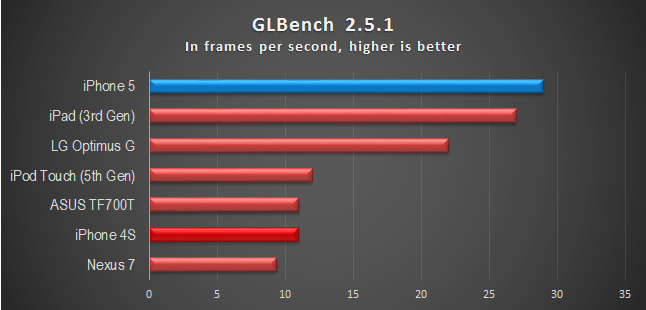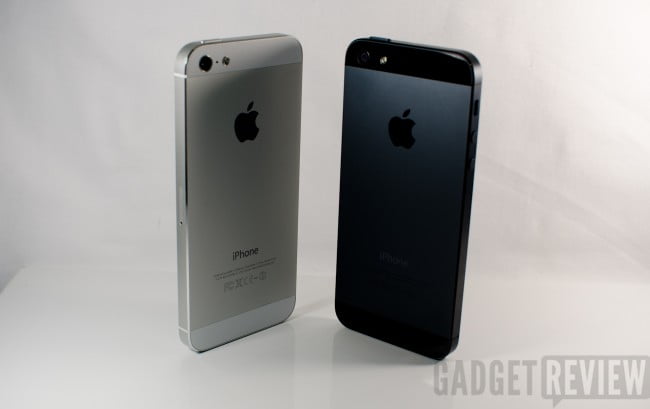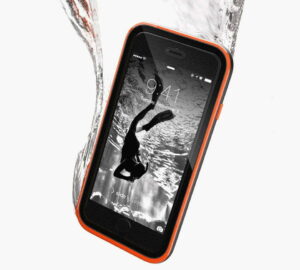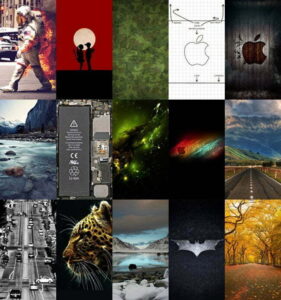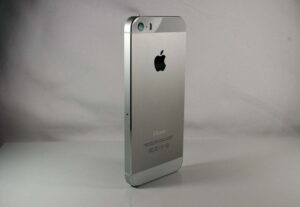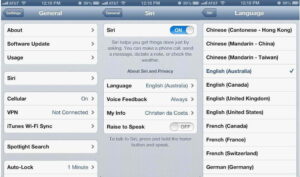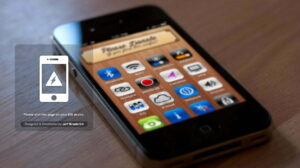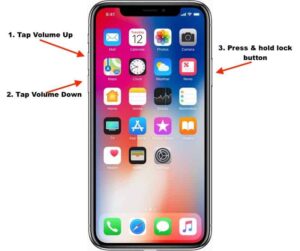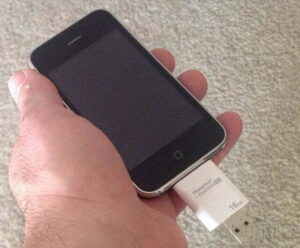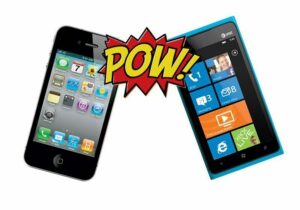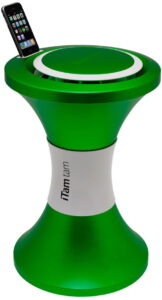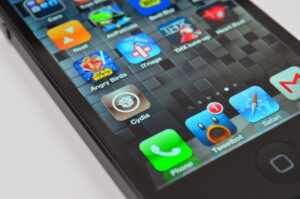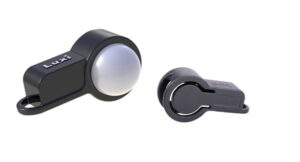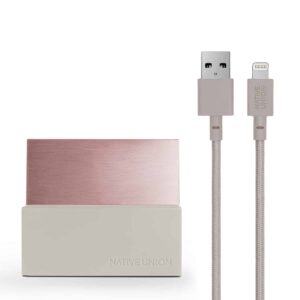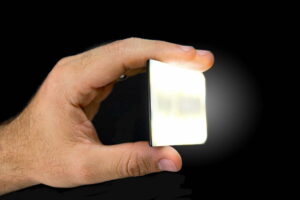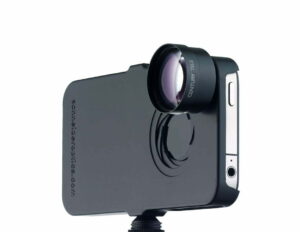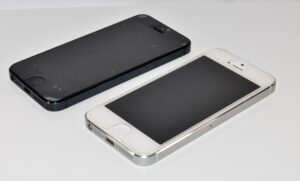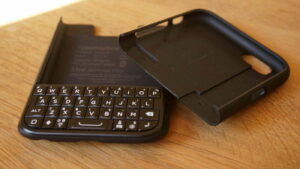It is the smartphone. Apple spent plenty of time and money acquiring the name, and for good reason. It’s the most well-known and, often, the most desired phone. There’s a reason it’s the “iPhone 5 review”, not “Apple iPhone 5 review”. When people who aren’t up to date on mobile technologies ask, I almost always suggest to purchase the iPhone. And in its sixth iteration, the iPhone 5 remains the smartphone of choice.
It’s no longer the best smartphone in the world, but not getting one would be a big mistake. Because even though the hardware is extremely competitive with today’s top Android phones, the entire package makes this the best phone you can buy. Speaking of best phone, check out the best iPhone you can buy today.
Hardware
The iPhone 5 is the thinnest, lightest smartphone on the market, a major contrast to every competing handset. While the industry standard is to get bigger and bigger, the iPhone 5 is the first to change the screen size, and that change is moot compared to everyone else. And the manufacturing process that Apple uses to produce the iPhone is unlike anything that competitors Samsung, HTC, or others can reproduce. It looks and feels futuristic.
The iPhone 5 has a longer 4″ screen that is, for the first time, a widescreen display. Video plays on the screen without letterboxing, (though that depends on the video; lot’s of movies are shot at different aspect ratios, causing black bars on plenty of films). In general, video playback is improved to near-perfect performance. Video is so good that the only thing missing is a full 720p display; instead the iPhone 5 relies on a 1136×640 resolution, just shy of the HD standard. Most users won’t notice a loss of quality thanks to the dense screen (326ppi), but downscaled video doesn’t look as good HD video playing at full resolution. Holding the iPhone 5 side by side with any Android phone with a 720p display and the difference is clear, even if the iPhone 5’s display is significantly better.
Related: If you want more storage on your iPhone, check out our I-Flashdrive HD review.
While I’ve stated that the iPhone needs widescreen display for years, it’s clear why Apple has dragged its feet to change: the taller display is harder to reach. For years, using the top Android phones has been difficult one-handed because the screens were too tall and wide. Now the iPhone 5 is too tall; plenty of users won’t be able to reach the top of the screen. It’s a stretch to reach the new top row of apps. Google already encountered this problem and has fixed it in many apps by designing them so users don’t need to reach far up. Apple will have to do the same and improve app design; so will 3rd party app developers.
Phone design has also changed drastically. Gone is the glass/glass frame, and iconic and brilliant design that to this day hasn’t been outdone in two years time, exchanged with an aluminum back cover that doesn’t match the glossy bezel. It doesn’t look as good as the iPhone 4/4S, which still looks more convincingly stark and bold. After two years, the physical form of the iPhone 4 remains unbeaten, even by the iPhone 5.
Related: Also check out our Ipin review.
The iPhone 5 does have a certain vibrant appeal to it, especially the white model, which has excellent contrast with the pure white bezel and off-white aluminum casing. The black model, alternatively, looks fairly dull, a sharp contrast to the almost virgin white and domineering black of the iPhone 4.
There are a few baffling issues with the iPhone 5. The first is shipping new phones with scratches and scuffs to serious dents. My sister’s iPhone shipped with the dent you can see in the picture above. The iPhone 5 is just too easy to damage aesthetically. The iPhone itself is sturdier than the 4/4S; I mistakenly dropped an iPhone 5 flat on tile floor, and it took no damage. By comparison, dropping the iPhone 4S in a heavy-duty case caused it to reboot.
Picking up additional scuffs and damage, however, is far too easy. The screen, machined edges, and metal frame take damage from everyday use and wear too easily. Just take a look at the picture below to see the damage my test iPhone picked up just from sitting in my pocket.
One additional serious problem is the placement of the auxiliary jack has to the bottom of the phone. Having the headphone/audio port on the bottom of the phone is extremely inconvenience, especially for wired headsets when driving or when the phone is in your pocket. If the phone app and any music apps turned software upside down like the voice memo app, the placement would just be mildly annoying. Without such a feature it’s a serious nuisance to flip the phone for calls and listening to music when not holding the phone.
While aesthetic and physical changes are blatant, the most significant upgrade to the iPhone 5 is internal. The new A6 processor is much faster than the iPhone 4S before it, a 1.3GHz dual-core chip with twice twice the speed. It even provides better overall performance — between everyday use and graphics-heavy apps — than the iPad 3, largely considered one of the most powerful tablets on the market. It accomplishes this thanks to an all-new architecture designed by Apple based on the ARM Cortex A9, but different enough to increase performance beyond similar chips.
In effect, the iPhone 5 is as good for gaming and twice as fast as the iPad 3, and far more power efficient to boot. As you’ll read below, the performance boost with the A6 processor is so critical that it is the best reason for iPhone owners to upgrade to the iPhone 5. It’s the fastest smartphone in the world. The improved processor, doubled RAM (1GB), and more efficient software make this significant improvement. It’s remarkable.
The iPhone 5 is one of the most impressive pieces of hardware ever built. It looks great, feels excellent, and is blazingly fast. There are some problems, such as easy aesthetic damage and that the taller screen is more difficult to use one-handed, but by and large the iPhone 5 is one of the best built smartphones you can buy today.
Software
It’s a fair assessment that iOS hasn’t changed significantly since its inception over five years ago. The basic OS remain mostly the same. For this reason Android users claim their mobile OS of choice will overtake iOS, and I believe that will happen in 2013. Apple does need to institute some significant changes to the overall structure of iOS, which is becoming crowded and antiquated in several key ways. And while it once was the easiest OS to use, it is quickly losing ground to Android in simplicity and ease-of-use.
iOS features a number of slight upgrades, most of which improve the overall efficiency and flow of the device, such as no password requirement for updating apps. Others, like the removal of Google Maps in place of Apple’s own Maps apps, are a significant downgrade. For iPhone 4/4S owners, the improvements to iOS 6 may not be worth upgrading to just yet for several reasons, but most specifically regarding Apple Maps.
Apple Maps a generally excellent app that lacks two important features that Google Maps had readily available: detailed traffic information, and directions for public transportation. Apple Maps does offer voiced turn-by-turn navigation for free, but all Android phones have done this for over two years now. It should have come to the iPhone long ago. Apple Maps poorly shows traffic conditions with bulging bars that crowd the screen and too many areas that have no information whatsoever. For public transit, Apple Maps suggests downloading a number of third party apps, none of which are as efficient as Google Maps. I recommend that iPhone 5 buyers get Google Maps or Nokia Maps free, both of which are browser-based map applications, or download the Bing app for Bing Maps. Business Insider has an excellent article with instructions for GPS services.
Other changes are so slight that they’re almost imperceptible. Siri, the talk-to search service, has more functionality in iOS 6, such as showing sports information, but it still has difficulty properly understanding regular speech. Some of the problems are based on data connections; my testing found that over Wi-Fi Siri has better read performance than over 4G. The same holds true with LTE.
Passbook is a brilliant idea, an all-in-one service for movie tickets, in-store electronic payments, scanning airplane tickets and more, but we’ll have to wait until more services and retailers make use of it before it is actually beneficial to most iPhone owners. Some stores, like Starbucks and Target, have apps that work with Passbook, but they work just as well as standalone apps. Most users won’t have any idea of what to do to use Passbook, and Apple offers no indication of of that either.
Safari is improved with a larger selection of options for sharing and reading later, as well as sharing open tabs across iOS to other devices, like an iPad or Mac. Tabs can be shared between your iPhone and other iOS devices or PC’s with Safari installed, a feature Google’s Chrome is partly famous for. The most significant improvement with Safari is how fast it is now. Pages load instantly. For what feels like the first time, a phone is as powerful as a computer.
The keyboard has become more difficult to type on, as it is prone to more typing mistakes than any previous iPhone model or firmware was. I suspect that this is from iOS 6 and the way it functions with the iPhone 5. I’ve made more spelling mistakes in typing on the iPhone 5 than the iPhone 4S, 3GS, or original iPhone by a significant margin. It is still a better keyboard than most available virtual keyboards available to Android handsets, but users upgrading from older iPhones will have to adjust to more spelling errors.
The key software improvements are difficult to admire in light of the number of new flaws or features that aren’t fully developed. iOS 6 is faster and more efficient than previous versions of iOS, but I am content with using iOS 5 on my iPhone 4S for a number of reasons, including the built-in Google Maps and better performing keyboard. The only real loss for my iPhone 4S is app updates that require iOS 6, and the 5-10% performance boost that the new OS offers. Even the phone app looks worse, now with a bright white dialpad instead of the high-contrast dark buttons the iPhone originally shipped with.
App & Media Ecosystem
It’s worth briefly discussing the current app ecosystem compared to the major competitor Android. Right now iOS has over 600,000 apps, about the same number as Android does, but apps are in general far better on iOS than on Android. Apps tend to release first on iOS, and though more often then not they are more expensive (or release with an outright cost, compared to free but ad-based Android apps), the quality on iOS is visibly better in 99/100 apps.
The App Store is much better organized and much better for app discovery than Android. For gaming and utilities, the iPhone is almost always the best device to use, though high-end or specialized utilities are often difficult to find or unavailable on iOS. With rare exception iOS is the platform of choice for app developers and users alike, though with Android gaining market share in the mobile OS space both in the US and worldwide, that is shifting, even with Apple earning the vast majority of app sale profits.
Media on iOS is also much better thanks to iTunes on the PC and the iPhone itself. While Windows Phone 8 devices are easier for PC syncing, using iTunes on the PC is easy enough and the latest iTunes 11 is significantly faster than past versions. There are multiple options for backing up data (to iCloud, to your PC over Wi-Fi or a wired connection, or not at all) which are more convenient and easier to use than both Android and WP8 in most cases.
While nearly all of the same media content can be found on any mobile OS, iTunes tends to get the latest TV shows and films first. However, iOS only plays specific file types, so users who burn or transfer their own media to the phone should stick with Android, which is better suited for playing HD content with uncommon file types.
But when it comes to apps, iOS reigns supreme. No service can match the ease-of-use, organization, or sheer number of high-quality apps that Apple makes available on the iPhone. In many ways, years-long Apple users who have plenty of purchased content for iOS will want to stick with the iPhone so not to lose all of that content. Then again, even if most of it is available on Android — and perhaps even for free — it won’t have the quality or functionality that iOS apps have. Yet iOS users will have to pay a price for those apps in many cases, while Android users do not.
Battery
I’m equally impressed by the battery life and disappointed that Apple hasn’t increased the capacity of the iPhone’s battery. The measly 1432mAh capacity battery, compared to the 2000+ mAh batteries of competitors, has excellent battery life but it doesn’t improve significantly over the iPhone 4S. Using multiple apps simultaneously, especially GPS-based apps, will drain the battery within a few short hours. Battery life drops 10% every 15-20 minutes (depending on your data connection) when using Apple Maps for navigation, streaming music, and having push email enabled. Competing Android devices today will drop 10% every 20-30 minutes, even with larger displays.
The battery is practically identical to the iPhone 4S’s 1423mAh capacity battery, which considering the size increase of the iPhone 5 is unexpected. However, the iPhone 5 is extremely efficiency on LTE, Wi-Fi, during calls, and during general use. It is often on-par with competing Android devices under regular use, though it cannot last as long on standby than competing Android models. When straining the iPhone 5, it will also buckle much faster than most Android phones because of the lower-capacity battery.
The iPhone 5 does last a full day, but strenuous apps like the GPS will drain the battery too quickly. Even the Reminders app, which Apple boasted could remind users of something when they reached a destination, will leave the iPhone powerless after just a few hours. As more apps and inherent phone functions require more battery power, the iPhone 5 has a smarter, more efficient battery better, but not a better one.
Benchmarks & Performance
The iPhone 5 broke every benchmark record against both competing smartphones and tablets. If that’s not impressive enough, it did so at some pretty spectacular margins. That’s why, as mentioned above, the latest A6 processor is the best reason to buy the iPhone 5 over the 4S. Take a look at the benchmarks below.
In Browsermark (please note that this is based on Browsermark 1.0, which as of this writing is no longer available; we’ll begin including Browsermark 2.0 numbers in the near future), the iPhone 5 kills. It nearly topples 200,000 points, and is 40,000 points better than the ASUS Transformer Pad Infinity TF700T, a 10″ tablet that we wrote is the best Android tablet on the market. This sort of web-browsing performance is unprecedented. It’s easy to tell the difference Safari.
Again, the iPhone 5 dominates with the fastest performance we’ve seen to date. The iPhone 5 completes the Sunspider Javascript test in under a minute, and is the first device I’ve tested that can muster that sort of speed.
When it comes to graphics performance, the iPhone 5 does an exceptional job. Android devices like the LG Optimus G are catching up to the iPhone 5 already, but by and large the iPhone 5 is the dominant smartphone when it comes to performance. However, considering the growth of Android hardware, I expect the iPhone to be overtaken in graphical performance sometime in 2013, perhaps by summer, if not early spring. We’re still testing competing devices, but for the moment the iPhone 5 is the best smartphone for gaming performance and web browsing. The 4th generation iPad is slightly faster, but it does utilize more GPU cores. No phone or tablet, with the exception of the iPad 4, is faster than the iPhone 5.
Camera Quality
The iPhone has always had excellent camera quality, and the same holds true with the iPhone 5. It still shoots 8MP stills like on the iPhone 4S, though quality has improved, albeit slightly. Photos are sharper, and pixel for pixel pictures come out clearer and they are more pleasant to look at. Colors are more accurate, and even HDR photography has improved.
However, the improvements seem almost moot compared to the already excellent iPhone 4S camera. Photos are indeed clearer, sharper, and provide better color, but the level of growth has stagnated compared to previous iPhone models. That’s not to say it isn’t a good camera, quite the opposite. I believe that Apple may have run into a technological barrier with the camera sensor, but there is no evidence to support that theory.
Some users — not all — have found purple flaring when shooting bright light sources due to the sapphire crystal glass cover. I haven’t experienced on it with my test unit, nor have I seen it in person with any iPhone 5’s other people own, but many have complained about the issue. Apple has not claimed that it is a problem and offers no fix for it.
Conclusion
The iPhone 5 may not be the work of art that the iPhone 4/4S was, but it is certainly one of the best smartphones in existence. The iPhone 5 is a diagonal step forward, improving the overall quality of the phone but not at the same pace as the competition. While Apple has consistently remained ahead, this year was the first time we saw a smartphone better than the iPhone 4S, and in terms of hardware and design the iPhone 5 isn’t necessarily the best smartphone in the world.
But if there’s anything that the iPhone is known for, it’s as a multi-function device, a jack-of-all-trades smartphone that does everything users need and more. Competitors like the Samsung Galaxy Note 2 and Motorola Droid Razr HD Maxx offer similar designs — the former as a combination tablet-smartphone, the latter as a long-lasting phone for 2-3 days of use — the iPhone 5 is nearly perfect for multimedia. The new widescreen display and excellent screen are great for watching movies. The thin and light frame, as well as the vastly improved processor are excellent for playing games. And when it comes to apps, there is no competition to the iPhone.
The iPhone 5 does leave a lot to be desired, and in many ways does not improve much over last year’s iPhone 4S. As stated earlier, I’m perfectly content with the iPhone 4S running iOS 5.1. Yet the iPhone 5 is brutishly powerful and still very refined. It’s far more elegant than the massive, overly-masculine Android smartphone that come out with kevlar and are bigger and always brick-shaped. Even with it’s flaws the iPhone 5 is the most desirable smartphone in the world, one I can’t recommend enough. It’s a great device. You won’t be disappointed.
Editor’s Rating:
[Rating: 4/5]
Great
Bottom Line: It’s the smallest, lightest, and fastest smartphone in the world. It isn’t the best hardware, but it is the best package you can buy.
Pros:
- Excellent widescreen display
- Excellent camera for stills and video
- The best selection of apps, media, and games
- The thinnest, lightest phone by a longshot
- The fastest smart device in the world
- It looks really great in white
- Sturdier build that doesn’t necessarily require a case
- Widescreen is much better for viewing media…
Cons:
- …but it makes the top of the screen harder to reach one-handed
- Out of the box damage and scuffs are commonplace
- Too easy to cause minor aesthetic damage to the frame
- iOS 6 offers minimal improvement; typing is noticeably less accurate
- Battery life is decent but not improved; can drain quickly under strain
- Design is less appealing than the iPhone 4/4S
- Pricing for higher capacity models is outrageously expensive
